25 have author last names that start with V have author last names that start with V
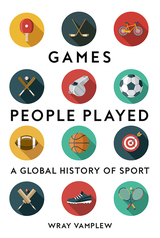
Games People Played is, surprisingly, the first global history of sports. The book shows how sports have been practiced, experienced, and made meaningful by players and fans throughout history. It assesses how sports developed and diffused across the globe, as well as many other aspects, from emotion, discrimination, and conviviality; to politics, nationalism, and protest; and how economics has turned sports into a huge consumer industry. It shows how sports are sociable and health-giving, and also contribute to charity. However, it also examines their dark side: sports’ impact on the environment, the use of performance-enhancing drugs, and match-fixing. Covering everything from curling to baseball, boxing to motor racing, this book will appeal to anyone who plays, watches, and enjoys sports, and wants to know more about their history and global impact.
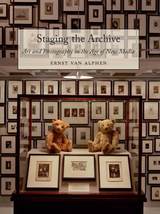
Staging the Archive shows how artists read the concept of the archive against the grain, questioning not only what the archive is and can be but what materials, images, or ideas can be archived. Ernst van Alphen examines these archival artists and artworks in detail, setting them within their social, political, and aesthetic contexts. Exploring the works of Marcel Duchamp, Marcel Broodthaers, Christian Boltanski, Annette Messager, Fiona Tan, and Sophie Calle, among others, he reveals how modern and contemporary artists have used and contested the notion of the archive to establish new relationships to history, information, and data.
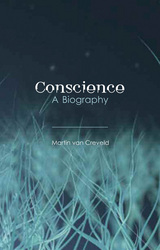
In this biography of that most elusive human element, Martin van Creveld explores conscience throughout history, ranging across numerous subjects, from human rights to health to the environment. Along the way he considers the evolution of conscience in its myriad, occasionally strange, and ever-surprising permutations. He examines the Old Testament, which—erroneously, it turns out—is normally seen as the fountainhead from which the Western idea of conscience has sprung. Next, he takes us to meet Antigone, the first person on record to explicitly speak of conscience. We then visit with the philosophers Zeno, Cicero and Seneca; with Christian thinkers such as Paul, Augustine, Aquinas, and, above all, Martin Luther; as well as modern intellectual giants such as Machiavelli, Rousseau, Kant, Hegel, Nietzsche, and Freud. Individual chapters are devoted to Japan, China, and even the Nazis, as well as the most recent discoveries in robotics and neuroscience and how they have contributed to the ways we think about our own morality. Ultimately, van Creveld shows that conscience remains as elusive as ever, a continuously mysterious voice that guides how we think about right and wrong.

In his compelling retelling of the conflict, Anton van der Lem explores the main issues at stake on both sides of the struggle and why it took eighty years to achieve peace. He recounts in vivid detail the roles of the key protagonists, the decisive battles, and the war’s major turning points, from the Spanish governor’s Council of Blood to the Twelve Years Truce, while all the time unraveling the shifting political, religious, and military alliances that would entangle the foreign powers of France, Italy, and England. Featuring striking, rarely seen illustrations, this is a timely and balanced account of one of the most historically important conflicts of the early modern period.
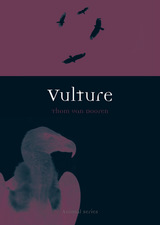
Simply because they are large scavenging birds, vultures are often viewed as harbingers of death. But, as Thom van Dooren shows in this cultural and natural history, that dominant association leaves us with a very one-dimensional understanding of a group of actually rather fascinating and diverse creatures.
Vulture offers an enlightening new history of this much-misunderstood bird. Vultures vary in type and size, and while some have a diet mainly of bone, others are actually almost completely vegetarian. Most interesting, despite its notorious association with death, the vulture very rarely, if ever, kills for itself. In different cultural mythologies, vultures play a role in disposing of the dead and officiating over human sacrifices, but they have often been viewed as courageous and noble creatures as well—believed to be indispensable in the containment of waste and disease and even to be world creators and divine mothers. Van Dooren explores these many histories, from some of the earliest-known Neolithic sites in which vultures are thought to have consumed the dead to contemporary efforts to reintroduce the bearded vulture into the Alps.
Highlighting the rich diversity of vultures and the many ways in which people have understood and lived with them, Vulture invites a new appreciation and wonder for these incredible birds.
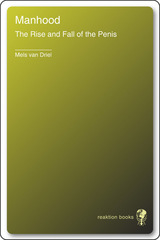
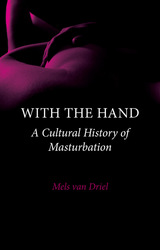
People call it everything from “walking your dog” to “scratching your bean.” Women usually do it at home. Men, it sometimes seems, do it everywhere. Some people think it’s healthy; others think it is a sin that will send you straight to hell. But while many people declare that everyone’s doing it, no one actually talks about it—outside the pages of Cosmo, masturbation is among the most taboo of topics, not suitable for polite society or public conversation.
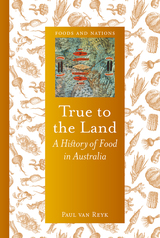
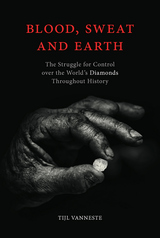
Blood, Sweat and Earth is a hard-hitting historical exposé of the diamond industry, focusing on the exploitation of workers and the environment, the monopolization of uncut diamonds, and how little this has changed over time. It describes the use of forced labor and political oppression by Indian sultans, Portuguese colonizers in Brazil, and Western industrialists in many parts of Africa—as well as the hoarding of diamonds to maintain high prices, from the English East India Company to De Beers. While recent discoveries of diamond deposits in Siberia, Canada, and Australia have brought an end to monopolization, the book shows that advances in the production of synthetic diamonds have not yet been able to eradicate the exploitation caused by the world’s unquenchable thirst for sparkle.
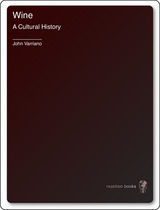
For oenophiles, casual wine-drinkers, and aesthetes alike, an informative and entertaining history sure to delight even the most sensitive palates.
From celebrations of Bacchus in ancient Rome to the Last Supper and casual dinner parties, wine has long been a key component of festivities, ceremonies, and celebrations. Made by almost every civilization throughout history, in every part of the world, wine has been used in religious ceremonies, inspired artists and writers, been employed as a healing medicine, and, most often, sipped as a way to relax with a gathering of friends. Yet, like all other forms of alcohol, wine has also had its critics, who condemn it for the drunkenness and bad behavior that arise with its overconsumption. Wine can render you tongue-tied or philosophical; it can heal wounds or damage health; it can bring society together or rend it. In this fascinating cultural history of wine, John Varriano takes us on a tour of wine’s lively story, revealing the polarizing effect wine has had on society and culture through the ages.
From its origins in ancient Egypt and Mesopotamia to the expanding contemporary industries in Australia, New Zealand, and America, Varriano examines how wine is made and how it has been used in rituals, revelries, and remedies throughout history. In addition, he investigates the history of wine’s transformative effects on body and soul in art, literature, and science from the mosaics of ancient Rome to the poetry of Dickinson and Neruda and the paintings of Caravaggio and Manet.
A spirited exploration, this book will delight lovers of sauvignon blanc or pinot noir, as well as those who are interested in the rich history of human creativity and consumption.
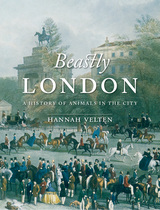
Velten travels back in history to describe a time when Londoners shared their homes with pets and livestock—along with a variety of other pests, vermin, and bedbugs; Londoners imported beasts from all corners of the globe for display in their homes, zoos, and parks; and ponies flying in hot air balloons and dancing fleas were considered entertainment. As she shows, London transformed from a city with a mainly exploitative relationship with animals to the birthplace of animal welfare societies and animal rights’ campaigns. Packed with over one hundred illustrations, Beastly London is a revealing look at how animals have been central to the city’s success.
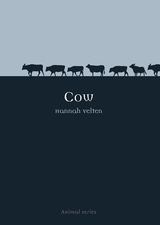
From the milk we drink in the morning, to the leather shoes we slip on for the day, to the steak we savor at dinner, our daily lives are thoroughly bound up with cows. Yet there is a far more complex story behind this seemingly benign creature, which Hannah Velten explores here, plumbing the rich trove of myth, fact, and legend surrounding these familar animals.
From the plowing field to the rodeo to the temple, Velten tracks the constantly changing social relationship between man and cattle, beginning with the domestication of aurochs around 9000 BCE. From there, Cow launches into a fascinating story of religious fanaticism, scientific exploits, and the economic transformations engendered by the trade of the numerous products derived from the animal. She explores in engaging detail how despite cattle’s prominence at two ends of a wide spectrum: Hinduism venerates the cow as one of the most sacred members of the animal kingdom, while beef is a prized staple of the American diet. Thought provoking and informative, Cow restores this oft-overlooked animal to the nobility it richly deserves.
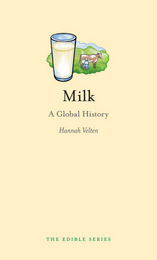
Milk—“It does a body good.” It’s difficult to deny the truth of the American Dairy Council’s former advertising campaign. From birth milk is the sustaining and essential food of all mammals. It is the first food we ever taste. And yet, despite that natural relationship to milk, the majority of the world’s population cannot digest it in the form most often available to adults—cow’s milk.
In Milk, Hannah Velten explores the myths and misconceptions surrounding the ubiquitous drink. Modern milk processing produces a safe, clean beverage that is very different from pure milk straight from the cow. Nonetheless, there are many advocates of raw milk that long for the days before pasteurization, homogenization, and standardization. Yet milk in the time before these scientific processes was even less natural than today—known then as the white poison, it was bacteria-ridden, mixed with additives to make it look like milk after the cream was removed, filled with chemicals to promote its shelf life, and extremely watered down.
Now that milk is considered a staple of a healthy and balanced diet, Velten investigates how and why conceptions of milk have shifted in the public consciousness, from the science of nutrition to the dairy industry’s advertising campaigns. This highly illustrated exploration of one of the most fundamental foods and drinks also includes recipes for ice-cream, milkshakes, and even milk paint. Milk will surprise and entertain in equal measure.
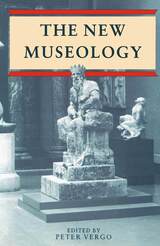
"A lively and controversial symposium ... thought-provoking"—The Sunday Times (Paperbacks of the Year, 1989)
"The essays are all distinguished by their topicality and lucidity."—MuseumNews
"A welcome addition to the library of Museology"—Art Monthly
"The New Museology is essential reading for all those seeking to understand the current debate in museum ideologies."—International Journal of Museum Management and Scholarship
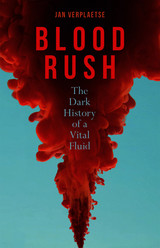
Blood Rush shows how, throughout history, blood has had the capacity to intoxicate us, to the point that we lose ourselves, whether in violence, through hunting, fighting, or killing, or in the vicarious thrill of watching sporting events, horror films, or video games. Are these feelings physical, or in our imagination? Where does the magic of blood come from? In his deeply researched and provocative narrative, Verplaetse moves from antiquity to the present, from magic to experimental psychology, from philosophy to religion and scientific discoveries, to demonstrate why blood at once attracts and repels us.
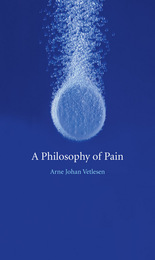
“Living involves being exposed to pain every second—not necessarily as an insistent reality, but always as a possibility,” writes Arne Vetlesen in A Philosophy of Pain, a thought-provoking look at an inevitable and essential aspect of the human condition. Here, Vetlesen addresses pain in many forms, including the pain inflicted during torture; the pain suffered in disease; the pain accompanying anxiety, grief, and depression; and the pain brought by violence. He examines the dual nature of pain: how we attempt to avoid it as much as possible in our daily lives, and yet conversely, we obtain a thrill from seeking it.
Vetlesen’s analysis of pain is revealing, plumbing the very center of many of our most intense and complicated emotions. He looks at pain within different arenas of modern life such as family and work, and he specifically probes at a very common modern phenomenon, the idea of pushing oneself to the limit. Engaging throughout with the ideas of thinkers such as Søren Kierkegaard, Sigmund Freud, Martin Heidegger, Jean-Paul Sartre, Maurice Merleau-Ponty, Max Horkheimer, Theodor Adorno, Alice Miller, Susan Sontag, and Melanie Klein, A Philosophy of Pain asks which came first, thinking or feeling, and explores the concept and possibility of empathy.
Vetlesen offers an original and insightful perspective on something that all of us suffer and endure—from a sprained ankle to a broken heart. Although pain is in itself unpleasant, our ability to feel it reminds us that we are alive.
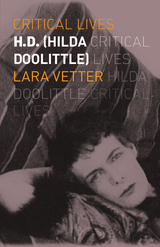
H.D. (Hilda Doolittle, 1886–1961), best known for her imagist poetry, was one of the first writers of free verse in English. For over forty years, H.D. wrote poetry about forgotten ancient goddesses and autobiographical prose about her own traumas and desires. Dubbed the “perfect bi –” by Sigmund Freud, she was also a scholar of religion, mythology, and history, a translator of ancient Greek, and an avant-garde filmmaker. This new biography explores the fascinating life and work of this important but often overlooked modernist figure.
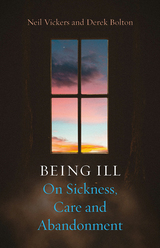
A serious illness often changes the way others see us. Few, if any, relationships remain the same. The sick become more dependent on partners and family members, while more distant contacts become strained. The carers of the ill are also often isolated. This book focuses on our sense of self when ill and how infirmity plays out in our relationships with others. Neil Vickers and Derek Bolton offer an original perspective, drawing on neuroscience, psychology, and psychoanalysis as well as memoirs of the ill or their carers to reveal how a sense of connectedness and group belonging can not only improve care but also make societies more resilient to illness. This is an essential book on the experience of major illness.
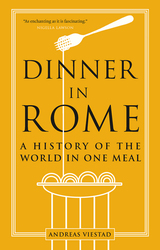
“There is more history in a bowl of pasta than in the Colosseum,” writes Andreas Viestad in Dinner in Rome. From the table of a classic Roman restaurant, Viestad takes us on a fascinating culinary exploration of the Eternal City and global civilization. Food, he argues, is history’s secret driving force. Viestad finds deeper meanings in his meal: He uses the bread that begins his dinner to trace the origins of wheat and its role in Rome’s rise as well as its downfall. With his fried artichoke antipasto, he explains olive oil’s part in the religious conflict of sixteenth-century Europe. And, from his sorbet dessert, he recounts how lemons featured in the history of the Mafia in the nineteenth century and how the hunger for sugar fueled the slave trade. Viestad’s dinner may be local, but his story is universal. His “culinary archaeology” is an entertaining, flavorful journey across the dinner table and time. Readers will never look at spaghetti carbonara the same way again.
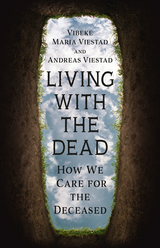
Death is universal. It will meet us all. But it’s also a practical problem—what do we do with dead bodies? Vibeke Maria and Andreas Viestad live by a cemetery and are daily spectators of its routines, and their fascination with burials has led them to dig deep to examine our relationship with the dead. Taking us on a journey around the world and into the past, the Viestads explore how the deceased are honored and cared for, cremated, and buried. From archaeological sites in Spain, Israel, and Russia to environmentally friendly burials in the United States and Ghana’s fantasy coffins, and from cremations without fire to the new industry turning our dearly departed’s ashes into diamonds, this empathetic and enthralling book is for anyone who knows their turn is coming, but who’d like a good book for the journey.

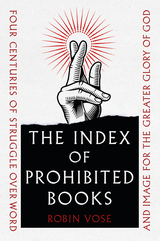
For more than four hundred years, the Catholic Church’s Index Librorum Prohibitorum struck terror into the hearts of authors, publishers, and booksellers around the world, while arousing ridicule and contempt from many others, especially those in Protestant and non-Christian circles. Biased, inconsistent, and frequently absurd in its attempt to ban objectionable texts of every conceivable description—with sometimes fatal consequences—the Index also reflected the deep learning and careful consideration of many hundreds of intellectual contributors over the long span of its storied evolution. This book constitutes the first full study of the Index of Prohibited Books to be published in English. It examines the reasons behind the Church’s attempts to censor religious, scientific, and artistic works, and considers not only why this most sustained of campaigns failed, but what lessons can be learned for today’s debates over freedom of expression and cancel culture.
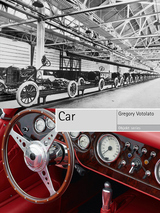
Votolato explores the ways that our love-hate relationship with the car has been intimately connected with car design. He tells the story of the rise of the private passenger car and all the psychological, social, and economic functions it has come to serve beyond mere transportation. Introducing readers to the automotive design process, he traces the lifecycle of the car from the drawing board to the scrapyard, offering insights from key figures in the industry, as well as a careful evaluation of the car’s enormous environmental impact. At the same time, he looks at the many cultures tied into the automobile, from drag racing and customizing to the luxury coachcraft of the classic era. Along the way, he takes us for a ride in some of the most famous cars ever to have had their tires inflated, from the Model T to the Tesla. The result is a top-down, thrilling burn through the history of one of our most beloved—and lamented—inventions.
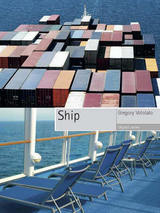
From oar-powered quinqueremes, to steam-powered freighters, to luxury ocean liners such as the Titanic,to aircraft carriers like the Abraham Lincoln,ships have played an integral role in trade, transportation, and war throughout history. Today, ships remain the largest and most expensive moving objects on the planet; engineers and designers constantly push the limits of design, creating vessels that continue to rival newer technologies such as airplanes and cars. But unlike other more common modes of transportation, the great ships of the world travel in the deep oceans, out of sight and out of mind—until, that is, something goes wrong. In Ship, Gregory Votolato explores the fiction and the reality of modern ships, the technology that creates them, and the events that can lead to disasters such as the Exxon Valdez or Amoco Cadiz.
Here Votolato delves into the world of the ship, describing the unpredictable and often-hostile environment of weather at sea, the resurgent threats posed by pirates, and the responsibilities of captains and crews onboard. Ship’sbroad overview of technology and design also offers unique insights into this extraordinary result of human creativity. Votolato’s book will appeal to readers interested in the general design history of ships as well as their social, political, and technological impact on our modern world.
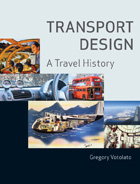
We are a world of travelers. Technologies have enabled us to connect with others around the world at incredible speed, and now both business and pleasure operate on a global scale. The process of getting from point A to point B is therefore of more interest than ever, and Gregory Votolato here charts the history of that journey in all its complexity and variety.
From limousines to canoes to the Apollo spacecraft, Votolato chronicles the ever-evolving design of vehicles, nautical crafts, and other objects of transportation. Transport Design explores the relationship between mass transportation and the travel experience, probing such issues as design styles, economics, entertainment, and, most importantly, customized comfort. Elements such as nineteenth-century railway sleeping couches or the heated car seats of today, Votolato demonstrates, were among the pioneering technologies that set the precedent for personal home and office furnishings. Ultimately, Transport Design contends that today’s pressures of global commerce and environmental threats demand a radical reappraisal of how and why we travel.
A compelling and readable study, Transport Design is a must-have for transport design scholars, transit buffs, and reluctant commuters alike.
READERS
Browse our collection.
PUBLISHERS
See BiblioVault's publisher services.
STUDENT SERVICES
Files for college accessibility offices.
UChicago Accessibility Resources
home | accessibility | search | about | contact us
BiblioVault ® 2001 - 2024
The University of Chicago Press









